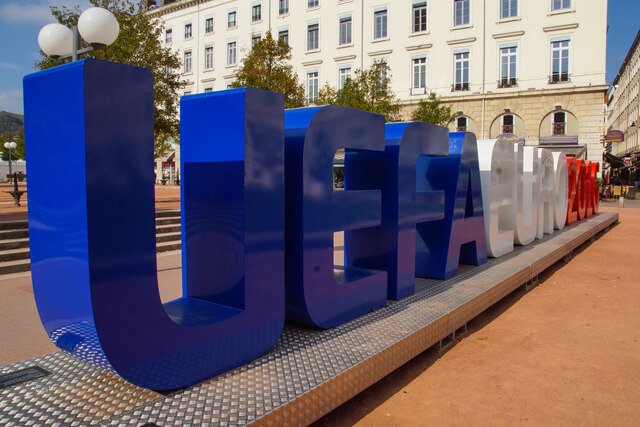A number of Internet of Things technologies have been developed to revolutionize security, comfort and transparency at sports matches at Euro 2016.
Football fans are counting days till the beginning of UEFA Euro 2016 that will start on June 10. The upcoming month is preparing 51 matches at 10 major stadiums across France with over 2.5 million expected spectators.
Traditionally, fans have an opportunity to gather at numerous bars and pubs or at “fan zones” to watch the games live on big screens. All major football championships have always been conducted in pretty the same way. Now, the information appeared that connected Internet of Things technologies can completely revolutionize the organization and experience of major sporting tournaments in the nearest future.
IoT for Safety
The Internet of Things technologies are believed to be able to positively influence the security of live matches. Machine-to-machine (M2M) connectivity can minimize casualties, both on the pitch and on the terraces. M2M connectivity in wearables will enable police and stadium officials to track, analyze and control behavior of huge groups of fans to avoid any overcrowding or crushing.
Sportsmen will also appreciate IoT technologies. Sensors embedded in their wearables will monitor players’ heart patterns and immediately inform club doctors in case of any problems detection. With such technologies, we can hope that heart attacks happening during matches will never repeat.
Goal-line Technology
Such cutting-edge goal-line monitoring technologies as Hawk-Eye and Goal Ref can prevent wrongful refereeing decisions like the one occurred with Frank Lampard’s goal that was incorrectly disallowed during the 2010 World Cup.
The development of Adidas ‘smart ball’ allows players to control how they strike the ball, which hopefully with lead to fewer refereeing mistakes, touchline oversights or goal-line blunders.
IoT for fans
You will hardly find a single sports fan who is really satisfied with the whole process of buying tickets, queuing, getting drinks and food, getting to and from the seat. And this all is just to watch a match live. IoT promises to come up with championship apps giving real-time information on tickets, letting ordering food and drink in advance.
The exciting example of innovative payment system is already used at Saracens’ Allianz Park stadium. Fans can purchase Gemalto wristbands and pay in a convenient and secure manner with the tap of a wrist. Organizers benefit as well as they can improve targeting to fans in order to implement intelligent communication, marketing and loyalty programmes due to the access to better data.
In future, prepaid wristbands and other new forms of payment technology will become more habitual at large sporting events.
IoT for Managers
Cisco has recently come up with software called the ‘Connected Athlete’. The main idea is a series of wireless sensors that are placed in the players’ boots and across the body and are connected to the internet via 4G or Wi-Fi. This breakthrough application couples real-time network analytics with policy control. Cisco says that with the Connected Athlete technology, a sportsman becomes more than just a competitor – he or she becomes a Wireless Body Area Network, or WBAN.
